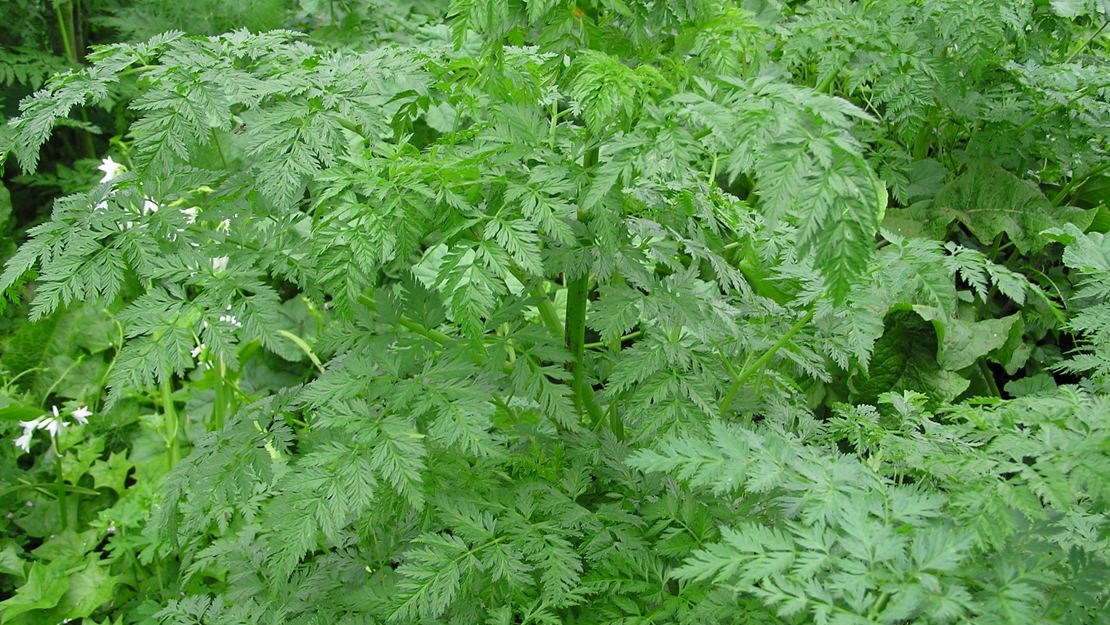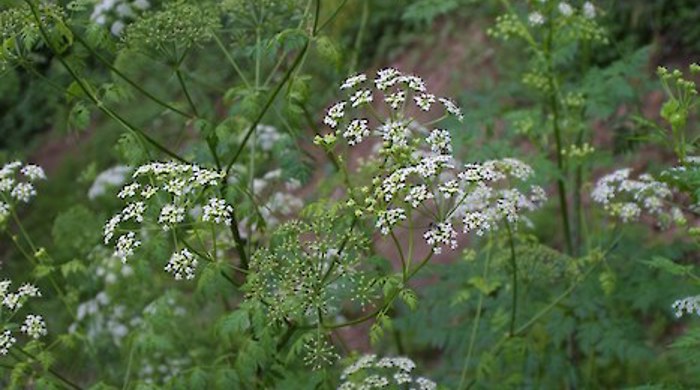Conium maculatum
Hemlock
Also known as:
Poison hemlock
Family: Apiaceae
Origin: Eurasia and North Africa

Regional Pest Management Plan (RPMP) status
- Hauraki Gulf Controlled Area Notice pest
- Whole region — Sustained control
General description
Foul-smelling, perennial, annual or biennial herb < 2.5 m tall. Taproot is thick. Stems are smooth, hollow, branching and spotted or streaked, with a red/purple lower half. Leaves are < 50 x 40 cm, pinnate, fern-like, lacy and triangular. Flowers are small, white and borne in umbels.
What you need to know
To help protect our environment:
- You must not breed, distribute, release or sell hemlock within the Auckland region.
- You must not plant hemlock within the Auckland region, unless you are transferring an existing plant on your land to another location within the boundaries of the same property.
- You must destroy any hemlock on land that you occupy if it has been planted in breach of the above rules and you are directed to do so by an authorised person.
Habitats
Damp areas, swamps, roadsides, riparian areas, forest margins, pasture, ditches, wasteland.
Dispersal
Seeds dispersed by wind, water and attachment to animal pelts. Human-mediated dispersal through contamination of clothing, machinery, gravel and soil.
Impact on environment
Acutely poisonous and poses severe health risks to humans, livestock and native fauna. Can cause fatality.
Control
Site management
Will quickly become succeeded by taller native species so only control in open or sensitive areas. If spraying remove all stock from the area as the plant material will become palatable after spraying. Follow up treated areas 3 times per year. Encourage natural regeneration of native plants or replant treated areas where possible after 2-3 treatments to establish dense ground cover and minimise reinvasion.
Recommended approaches
Physical control
Method: Dig out.
Plant parts requiring disposal: Seeds.
Disposal options: Remove to greenwaste or landfill if practical to prevent stock from eating it.
Biocontrol
Check for presence of agents: Hemlock moth (Agonopterix alstromeriana).
For more information about how biocontrol works, see What is biocontrol?
Community agrichemical control recommendations
No qualifications: Foliar spray with 100ml glyphosate green per 10L of water.
Safety notes
Acutely poisonous.
Caution: When using any herbicide or pesticide please read the label thoroughly to ensure that all instructions and safety requirements are followed.




